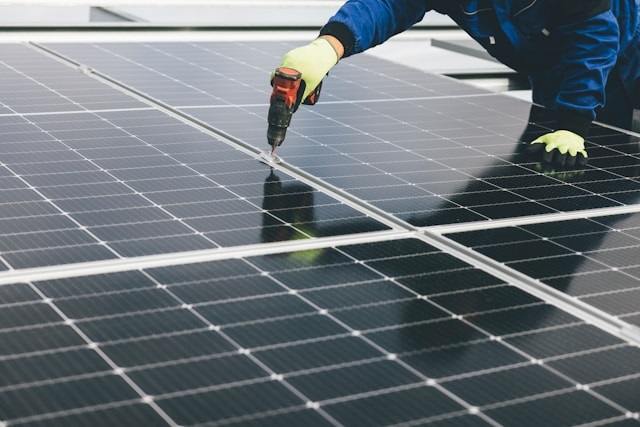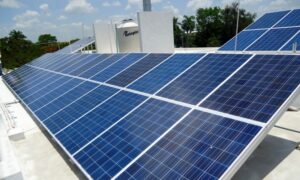The U.S. solar industry installed 32.4 gigawatts (GW) of new capacity in 2023—a 51% increase over 2022, according to the U.S. Solar Market Insight 2023 Year-in-Review report issued by the Solar Energy Industries Association and Wood Mackenzie. This set a new record.
The U.S. solar industry installed 32.4 gigawatts (GW) of new capacity in 2023—a 51% increase over 2022, according to the U.S. Solar Market Insight 2023 Year-in-Review report issued by the Solar Energy Industries Association and Wood Mackenzie. This set a new record, and it’s the first time in 80 years that a renewable source of electricity made up more than half of the annual capacity additions to the grid.
Abigail Ross Hopper, SEIA president and CEO, credits the Inflation Reduction Act’s effect. “The Inflation Reduction Act is supercharging solar deployment and having a material impact on our economy, helping America’s solar module manufacturing base grow 89% in 2023. If we stay the course with our federal clean energy policies, total solar deployment will quadruple over the next 10 years.”
The report predicts that by 2034, total U.S. solar capacity is expected to reach 673 GW, which is enough to power more than a million homes. It also forecasts the impact of the 2024 election and other economic and political factors on the solar market, within a 200-GW range.
“A high case for U.S. solar with increased supply chain stability, more tax credit financing, and lower interest rates would increase our outlook 17%,” said Michelle Davis, head of global solar at Wood Mackenzie and lead author of the report. “A low case with supply chain constraints, less tax credit financing, and static interest rates would decrease our outlook 24%.”
The total installed solar capacity grew to 177 GW last year, with every market segment seeing increases over the previous year. Examples include 22.5 GW of new capacity in the utility-scale sector and almost 800,000 homeowners adding solar.
Solar-plus-storage made up 13% of residential installations and 5% of nonresidential installations in 2023. According to the report, 25% of new residential installations and 10% of new nonresidential installations this year are expected to include storage.
However, while solar modular manufacturing capacity increased in 2023 to 16.1 GW (from 8.5 GW), prices for monofacial and bifacial solar modules fell 26% and 31%, respectively —a situation that could discourage U.S. manufacturers from completing proposed facilities. Currently, the United States doesn’t have ingot, wafer or cell manufacturing facilities in operation.
Nevertheless, 53% of all new electric generating capacity added to the grid last year was solar and more than half the states have at least 1 GW of total installed solar capacity. Texas completed the most solar installations, adding 6.5 GW. Colorado and Ohio joined the top 10 list for the first time in over a decade, and Wisconsin was added for the first time.
Fuente:
https://www.ecmag.com/








